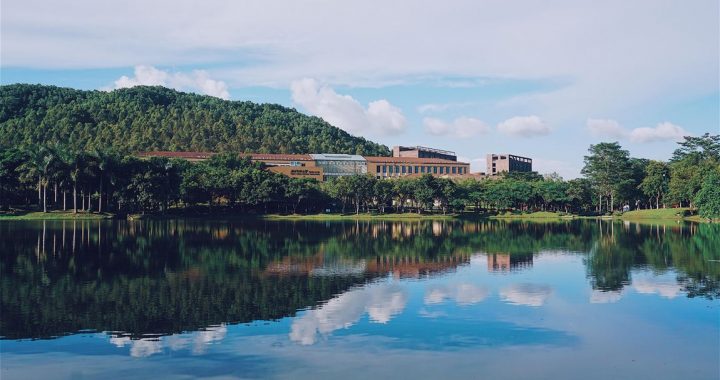Night at the Museum
5 min readA Peek into the treasure chest of zhuhai

Astunning set of objects on display at the city’s exquisite new museum takes the visitor on a hypnotizing trip back through time. The modern facade peels away quickly as you confront the evidence of those who lived in this same area as far back as 6,000 years ago, and the modern metropolis suddenly takes on a surprisingly antique character.
Painted Pottery

Four painted pottery items and a dozen fragments made approximately 6,000 years ago and excavated from the Housha Bay archeological site, these are the earliest and most representative discovered to date.
WHITE POTTERY GUI

A rare, successful restoration of one of the two White Pottery “gui”pieces excavated at the Housha Bay historic site in Zhuhai. White pottery”features a white body and surface. This pitcher was used for boiling and storing liquids, and its shape indicates a surprisingly advanced level of pottery-making in this region during the late Neolithic Period.
Pottery Findings at Baojing Bay Site

Archeologists found a surprisingly huge pottery reserve at Baojing Bay, located insouthwestern Gaolan island in Zhuhai. In that most of the pottery pieces unearthedhere are made of sandy clay they are estimated to have been produced approximately 6,000 years ago.
TAO DOU

Unearthed from the Baojing Bay site in Zhuhai. “Dou”was the name of food containersor sacrificial vessels in the ancient times of China. The craft ofdou”pottery dates back to the late Neolithic Age.
Barkcloth bat
A barkcloth bat made of stone, found in the Zhuhai territory, is one of the earliest representatives of barkcloth craftsmanship. Barkcloth is a versatile material that was once common in Asia, Africa, Indonesia, and the Pacific Barkcloth comes primarily from trees of the moraceae family and is made by beating sodden strips of the fibrousinner bark of these trees into sheets which are then finished into a variety of items.
STONE BEN
One of the most important tools invented in the neolithic age, “ben”was used for felling trees and wood processing by the Stone Age people Stone spinning wheel.
An early device for spinning thread or yarn from natural fibers. More advanced spinning wheels were first used in India, between 500 and 1000 CE and were replaced by spinning machinery during the Industrial Revolution. The stone spinning wheel indicates the very early spinning techniques used by people living in today’s Zhuhai as early as 6,000-7,000 years ago.
Stone Fishing-net Weights
A large number of archeological sites representing a crucial period in the history of the Pearl River Delta(some 4,000 years ago) have been found within the pearl river delta territory. The sites yielded a sizable number of stone fishing-net weights, reflecting the bustling fishing industry of Zhuhai 4, 000 years ago.
YU JUE(PENANNULAR JADE RING
Known as the oldest type of jade ornament found in China, in ancient times, jue”were used as earrings and bracelets Big-mouth zun.
Many ge”,”zun”,”dou”and other early pottery forms have been found, representing the Fubin stage of the middle and late Shang Dynasty culture on the east coast of Guangdong Province, and indicating early cultural exchange between eastern Guangdong and the pearl river environs.
FOUR-EAR POT
Found by local fishermen in the sea near Hebao island in Zhuhai, this piece testifies to the long-standing trade and communication between China and southeast Asia, as Well as Western countries, via this “pottery road on the sea Shi fan .
A mould-style tool used to make bronze-ware in early times. Bronze excavations from the Guangdong area have yielded only a small number of these, representing the Wucheng Civilization in the late Shang dynasty(1600-1046 BC).
ROCK ETCHINGS
The seven sets of rock etchings discovered at the Baojing Bay site demonstrate how human civilization flourished there as long ago as the late Neolithic and Bronze Ages Yi Zi Ge Dagger .
Unearthed in Nanping, Zhuhai, it is the only one of its kind found in the Pearl river estuary. This half-sword craftsmanship was most developed in China’s Yunnan Province and across vietnam. Made during the warring states period this find reinforces the historical connection between the pearl river delta and china’s southwest .
Made by zhushi
The style of the inscription”Zhushi suozhi found around shiyong bay near Wailingding island indicates that this original earthen jar was made during the Western Han Dynasty(206BC-24AD) This piece is the earliest cultural relic bearing.
Chinese characters found in the Pearl River estuary
GAI HUN TAN
This eerilyshaped, elaborately designed earthen piece was used as an urn or for storing other funerary objects in cremation during the Tang and Song dynasties .
IRON PAN
In 1279, Mongol forces launched a large scale naval offensive against Song forces at Mount Ya(present-day Yamen), forcing Emperor Huizong to flee. During the ensuing Battle of Yamen on March 19, 1279, the entire Song army and navy were wiped out The weapons, items from the daily life of soldiers and large amounts of copper coins found at the Shuijingkou site in Pingsha are important evidence of this bloody ending of a major dynasty in the history of china.
CELADON TRAY WITH FISH PATTERN
The high artistry of this piece reflects the flourishing ceramic industry of Song times in China.
TONG SHAOYIS ENVOY MEDAL
In 1904, Tong Shao-yi was appointed Special Commissioner to Tibet. He also visited India as China’s envoy in order to negotiate the tibet convention which was subsequently completed in Peking during April of 1906.
YINGYU JIQUAN 1862
Yingyu Jiquan(Chinese-English Instruction Manual), known as the earliest bilingual dictionary of spoken English and Chinese, created by Tong King-sing(1832-1892) in 1862. An influential figure in the national industrialization of china during the lat Qing Dynasty(1644-1912), Tong was born in today’s Zhuhai In 1861-63, he worked with the Jardine matheson Company in Tianjin.
“Full powers Seal 1919
The seal, made of ivory, was used by Tong Shao-yi during the Shanghai peace talks between the Beiyang Warlords and the South in 1919.
TONG SHAO-YI’S MEDAL 1908
In 1908, the U.S Congress passed a bill to return to china the excess of boxer Indemnity payments, amounting to over 17 million dollars. In December, Tong Shao-yi was sent by the Qing government as a special envoy to handle the issue in eight countries. The medal was awarded to him by the french government.
QIANSHAN CITY WALL IN QIANSHAN
Started in the first year of the Tiangi reign in the Ming dynasty(1368-1644) and expanded exclusively for military use in 1717 during emperor Kangxi’s reign in the Qing Dynasty (1644-1912).








